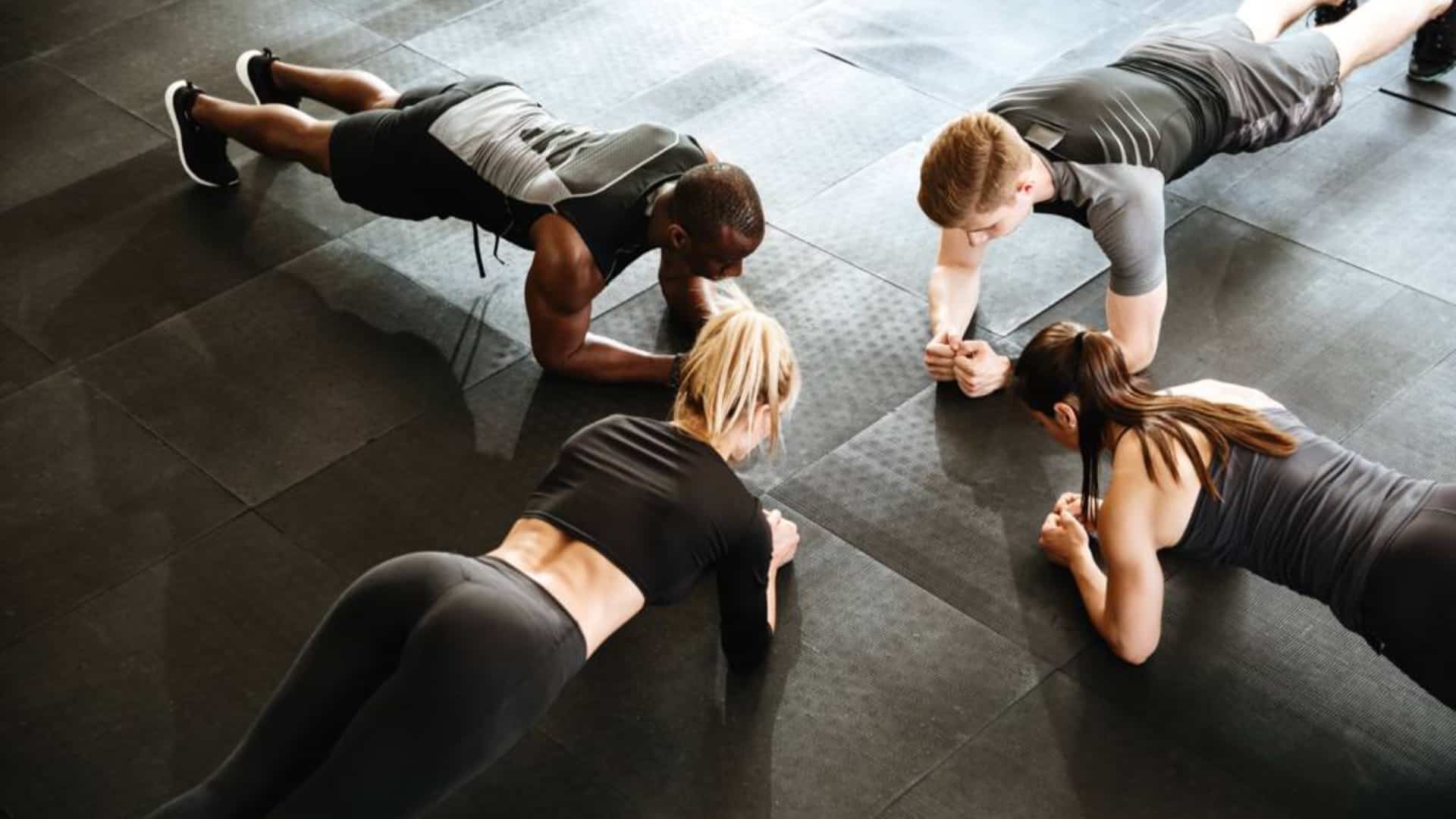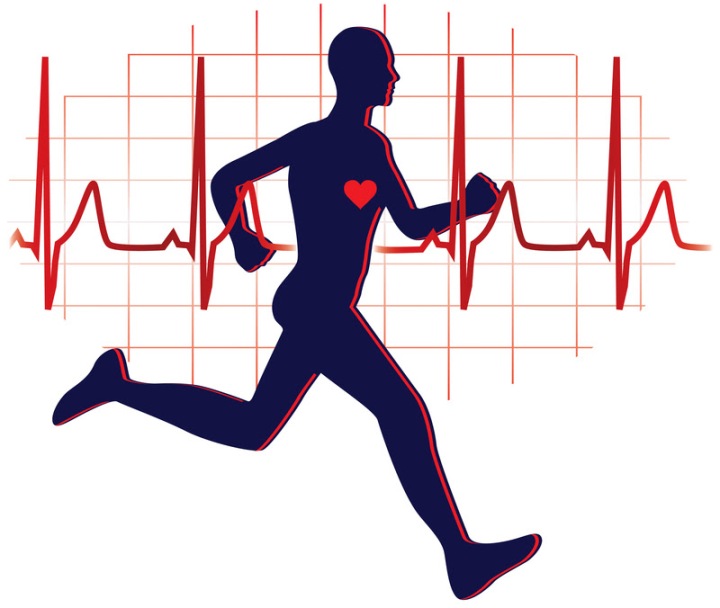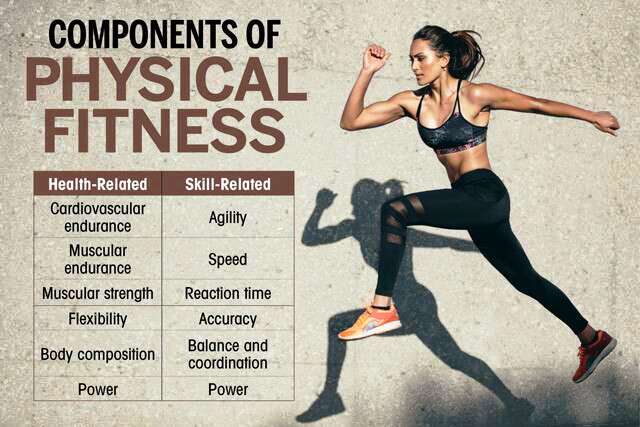In today’s world, where we spend a lot of time on screens and don’t move around much, it’s important to know the science behind staying fit and why exercising is important for a healthy body and mind.
It has been scientifically proven that regular physical activity can improve overall well-being beyond the aesthetic benefits.
Exercise has vast and profound benefits, from boosting mood and reducing stress to enhancing cognitive function and preventing chronic diseases.
This article will explore physical fitness, its benefits, key components, and how different workouts impact our bodies.

- What Is Physical Fitness
- Importance of Physical Fitness
- 1. Helps to Maintain and Lose weight
- 2. Control Blood Sugar Levels
- 3. Reducing the Risk of Cardiovascular Disease
- 4. Maintains Bone Health
- 5. Improve Mood and Mental Health
- 6. Reduce Stress and Depression
- 7. Improve Sleep Quality
- 9. Increase Energy Level
- 10. Improve Skin Health
- Components of Physical Fitness
- 1. Cardiovascular Endurance
- 2. Muscular Endurance
- 3. Muscular Strength
- 4. Flexibility
- 5. Body Composition
- 6. Power
- 7. Agility
- 8. Speed
- 9. Balance
- 10. Coordination
- Types Of Exercises To Improve Physical Fitness
- 1. Aerobic Exercises
- 2. Strength Training
- 3. Yoga And Pilates
- 4. Outdoor Activities
- Principles of Physical Conditioning
- Basic Fitness Program
- Cardiovascular Exercise
- Strength Training
- Core Exercises
- Flexibility Training
- Rest and Recovery
- Takeaway
What Is Physical Fitness
Physical fitness refers to the ability to perform daily activities with optimal strength, endurance, and performance.
Physical fitness measures the body’s ability to function efficiently and effectively during workouts and leisure activities. To remain physically fit and healthy, we must engage in physical activities and take measures to be physically fit.
It refers to any body movement that requires energy expenditure and involves the contraction of skeletal muscles. It can include various types of activities such as occupational tasks, sports, conditioning exercises, household chores, and other forms of physical movement.
Exercise, in contrast, is a specific type of physical activity that is planned, structured, repetitive, and focused on improving or maintaining physical fitness.
Physical fitness is one of the core preconditions of health. We cannot imagine a person being healthy without being physically fit.

Importance of Physical Fitness
As we know, physical activities, which were previously done at home and outside as part of daily routines, have decreased due to the development of science and technology.
Work that was done manually is now being carried out by machines. Automated equipment, such as automatic machines, remotes, and mobiles, and lifestyle changes that negatively affect our health and physical fitness.
Physical fitness training has numerous physical and mental benefits if done regularly.
1. Helps to Maintain and Lose weight
Training can help prevent excess weight gain or help maintain and weight loss. Physical activity burns calories.
The more intense the activity, the more calories you burn. Physical fitness is essential for a fast metabolism and for burning more calories daily. It also helps you maintain your muscle mass and weight loss.
However, given the increase in obesity and diabetes, the Department of Health and Human Services’s 2018 guidelines now focus on promoting healthy lifestyles and health-related physical fitness.
2. Control Blood Sugar Levels
Physical fitness training can also control and reduce blood sugar levels. There are a few ways that exercise lowers blood sugar:
- When insulin sensitivity is increased, muscle cells can use any available insulin to take up glucose during and after activity.
- When your muscles contract during activity, your cells can take up glucose and use it for energy, whether insulin is available or not.
Exercising regularly can stabilize blood sugar levels and reduce the risk of developing type 2 diabetes.
3. Reducing the Risk of Cardiovascular Disease
Routine physical fitness training can reduce your risk of heart and blood vessel diseases, such as heart attack or stroke. Exercise improves blood circulation, which may help reduce the risk of developing clots or blockages in the arteries.
If exercise is done regularly, the heart muscle will be trained and become stronger to pump blood throughout the body. Strong heart muscle can keep blood pressure stable.
In addition, physical fitness training is beneficial for increasing good cholesterol (HDL) and reducing bad cholesterol (LDL) in the body.

4. Maintains Bone Health
The next benefit of fitness training is to strengthen bones. People who actively exercise have been shown to have better bone density and muscle strength. Inactivity causes loss of bone.
Physical fitness can also prevent osteoporosis, especially in people aged 20-30. Exercise strengthens bones like it strengthens muscles.
Exercise is important for building strong bones when we are younger and for maintaining bone strength when we are older. Because bone is a living tissue, it changes over time in response to the forces placed upon it.
When you exercise regularly, your bones become denser. This improvement in bone also requires good nutrition, including adequate calcium and vitamin D.
5. Improve Mood and Mental Health
Physical fitness training can also improve mood. Increasing levels of the endorphin hormone can trigger feelings of pleasure and positivity.
People who exercise regularly tend to do so because it gives them an enormous sense of well-being. They feel more energetic throughout the day, sleep better at night, have sharper memories, and feel more relaxed and positive about themselves and their lives.
And it’s a powerful medicine for many common mental health challenges.

6. Reduce Stress and Depression
Studies have consistently shown that exercise provides a range of benefits for people struggling with depression. It not only provides physical advantages such as better sleep, increased energy levels, and well-being, but it also offers psychological benefits such as reduced stress and anxiety, improved mood, and heightened self-esteem.
Not only can exercise help in treating depression, but it can also prevent people from becoming depressed again.
In addition, exercise can increase levels of serotonin in the blood, which is generally reduced in people with depression.
People who regularly exercise tend to have better emotions and good mental health.
7. Improve Sleep Quality
Sleep is important for the body. It is the time to recover, conserve energy, repair, and build up the muscles worked during exercise. When we get enough good-quality sleep, the body produces growth hormones.
Exercise can contribute to more sound and restful sleep. Physical activity increases time spent in deep sleep, the most physically restorative sleep phase.
In addition to improving sleep quality, exercise can also help you increase the duration of your nightly rest.

9. Increase Energy Level
Exercise or physical activity raises the heart rate, increases blood flow, and releases endorphins, raising energy levels. Good cardiovascular exercises will strengthen your heart and give you more stamina.
If you’ve experienced fatigue after high-intensity training, you may have noticed that your energy levels picked back up a couple of hours later, and you feel more energized.
This is because it takes time for your body to produce the extra mitochondria needed. The more active you are, the more mitochondria your body can produce.
10. Improve Skin Health
When we exercise, blood is pumped through our body, working our heart muscles and circulating blood and oxygen. This increased blood flow during exercise can also improve circulation.
That means all of our body’s cells, including skin cells, are nourished by this blood flow, leading to improved vitality and more effective cellular repair and replacement.
Exercise in general—whether resistance training or cardio—helps neutralize whole-body inflammation by releasing anti-inflammatory proteins. It also helps the body control blood sugar and oxidative stress.

Components of Physical Fitness
Physical fitness consists of several components: cardiovascular endurance, muscular strength and endurance, flexibility, and body composition.
1. Cardiovascular Endurance
This refers to the cardiovascular system’s ability (heart, lungs, and blood vessels) to deliver oxygen and nutrients to the working muscles during sustained physical activity.
Cardiorespiratory fitness is related to the ability to perform moderate to high-intensity exercise for prolonged periods. It is typically improved through activities such as running, swimming, cycling, or aerobic exercises.
The best measure of cardio-respiratory fitness is VO2 max, the volume (V) of oxygen used when a person reaches the maximum (max) ability to supply oxygen (O2) to muscle tissue during exercise.

2. Muscular Endurance
Muscular endurance refers to the capacity of a muscle or group of muscles to sustain repeated contractions or a prolonged activity over time.
It is important for tasks like long-distance running, cycling, or doing multiple sets of exercises with lighter weights.

3. Muscular Strength
Muscular strength is the maximum force that a muscle or group of muscles can generate against resistance. It is essential for activities that require lifting, pushing, or carrying heavy objects.
Strength training exercises, such as weightlifting, resistance training, or bodyweight exercises, help develop muscular strength.
4. Flexibility
Flexibility is defined as the normal extensibility (ability to stretch) of all soft tissues (e.g., contractile and noncontractile) that allow a joint to have a complete range of motion (ROM).
The ability of muscles, tendons, and ligaments to stretch and facilitate proper movement is crucial to this process.
Good flexibility helps prevent injuries, improves posture, and enhances overall fitness. Stretching exercises, yoga, and Pilates are commonly practiced to improve flexibility.
5. Body Composition
Body composition refers to the proportion of body fat, muscle, bone, and other tissues. It is an indicator of overall health and fitness.
Maintaining a healthy body composition involves balancing muscle mass and body fat percentage through a combination of regular exercise and a balanced diet.
To Know Your Body Fat %: Use Our Body Fat % Calculator
6. Power
Power is a component of physical fitness that represents the ability to generate maximum force in a short period. It combines strength and speed to produce explosive movements.
Power is essential for activities that require quick and forceful movements, such as jumping, sprinting, throwing, and striking.
Developing power involves improving both strength and speed through exercises like plyometrics, Olympic weightlifting, and explosive movements.

7. Agility
Agility is the ability to quickly change direction or move the body efficiently in response to external stimuli.
It is important in sports and activities that require rapid movements, such as soccer, basketball, or martial arts.
8. Speed
Speed refers to the ability to perform a movement in a short period of time. The speed and strength will give you power and force.
It is crucial in many sports and activities, such as sprinting, soccer, basketball, and martial arts. Training may include sprint intervals, agility drills, and specific exercises targeting leg power and stride length to enhance speed.
9. Balance
Balance refers to maintaining stability and control over the body’s position. It is crucial for activities that require coordination and stability, such as yoga, gymnastics, or standing on one leg.
10. Coordination
Coordination integrates different body parts and senses smoothly to perform specific movements accurately. It involves the interaction of muscles, nerves, and the brain.
Activities like dancing, playing musical instruments, or sports that require precise movements enhance coordination.

Types Of Exercises To Improve Physical Fitness
Being physically fit is important for all age groups. One tries to be physically fit to live a better life and enjoy all the opportunities. Physical fitness is essential for every individual at all stages of life.
Various types of exercises can be beneficial for physical and mental health. The key is to find activities that are enjoyable and sustainable.
1. Aerobic Exercises
Aerobic exercises, also known as cardiovascular or cardio exercises, are activities that increase the heart rate and breathing rate for an extended period.
These exercises primarily target the cardiovascular system, improving its efficiency and endurance. Aerobic exercises also have significant antidepressant effects.
Activities like brisk walking, jogging, cycling, swimming, and dancing can elevate the heart rate, increase oxygen intake, and stimulate the release of endorphins.
Aim for at least 30–60 minutes of moderate-intensity aerobic exercise weekly.
2. Strength Training
Did you know that doing strength training can help you feel better physically and mentally? A comprehensive analysis of 21 studies, revealed that engaging in strength-training exercises can significantly reduce depressive symptoms.
Resistance training, such as lifting weights, doing bodyweight exercises, or using resistance bands, can help muscles get stronger and toned.
Strength training also provides mental benefits, boosting self-confidence and enhancing body image.

3. Yoga And Pilates
Yoga and Pilates are two popular forms of exercise that focus on fitness, flexibility, strength, and mental well-being.
- Yoga combines physical postures (asanas), breathing techniques (pranayama), and meditation. Yoga aims to promote physical strength, flexibility, balance, and relaxation.
- Pilates is a system of exercises that focuses on strengthening the core muscles and improving posture, flexibility, and overall body control. Pilates exercises emphasize controlled movements, proper alignment, and breath awareness.
Additionally, the study found that Pilates interventions were associated with a significant decrease in depression severity among participants.

4. Outdoor Activities
Nature has long been recognized as a source of solace and rejuvenation for the mind and body. Engaging in outdoor activities is important for physical fitness and mental health.
The systematic review and meta-analysis found that spending time in nature and engaging in outdoor activities were associated with reduced symptoms of depression, anxiety, and stress.
The combination of physical activity, exposure to natural elements, and a sense of connection with the environment played crucial roles in these positive outcomes.
Spending time in nature, whether hiking, cycling, gardening, or simply walking in a park, can positively impact mental health.

Principles of Physical Conditioning
There are several different principles to consider when developing an effective PCP:
- Progression: Conditioning programs must incorporate a systematic means to increase the training load.
- Regularity: Training programs must conduct physical conditioning sessions at least 3-5 times per week to realize a conditioning effect.
- Overload: Only when the body’s various systems are overloaded will they become able to handle greater load.
- Variety: Varying a program from time to time maintains interest and prevents staleness.
- Recovery: Essential for allowing the systems overloaded during conditioning to adapt and become stronger.
- Balance: Balanced conditioning programs ensure all the components of physical fitness conditioning (strength, endurance, and mobility) are properly addressed.
- Specificity: Specific conditioning yields specific gains. For example, stationary bike riding is of little value in improving running.
Basic Fitness Program
Here is a well-rounded physical fitness program that targets the main components of fitness:
Cardiovascular Exercise
- 30-60 minutes of moderate-intensity cardio 3-5 days per week
- Options: Running, cycling, swimming, rowing, elliptical, etc.
- Mix in 1-2 days of high-intensity interval training (HIIT)
- Example: 30 seconds max effort, 30 seconds rest for 10-15 rounds
Strength Training
- Full body strength routine 2-3 days per week with a day of rest between sessions
- Focus on compound exercises like squats, deadlifts, presses, rows
- 3-4 sets of 8-12 reps per exercise
- Work all major muscle groups
Core Exercises
- Abdominal exercises 2-3 days per week
- Examples: Planks, crunches, leg raises
- Lower back exercises 1-2 days per week
- Examples: Superman, bird dog
Flexibility Training
- Full body stretch routine after each workout session
- Focus on major muscle groups like quads, hamstrings, hips, back
- Hold static stretches for 20-30 seconds
Rest and Recovery
- Get 7-9 hours of quality sleep per night
- Foam roll and utilize other self-massage techniques
- Take 1-2 complete rest days per week
Takeaway
The benefits of physical fitness and exercise can be obtained by exercising for 30 minutes every day. However, if your body is tired, don’t force yourself to keep exercising.
Excessive exercise of the body is actually not good for health and is not recommended by doctors.
If you want to start exercising regularly or try a new type of exercise, you should consult a doctor first, especially if you have health problems like heart disease, diabetes, or arthritis.
Stay Fit, Life a Happy and Healthy Life

Manish is a NASM-certified fitness and nutrition coach with over 10 years of experience in weight lifting and fat loss fitness coaching. He specializes in gym-based training and has a lot of knowledge about exercise, lifting technique, biomechanics, and more.
Through “Fit Life Regime,” he generously shares the insights he’s gained over a decade in the field. His goal is to equip others with the knowledge to start their own fitness journey.

This is a great piece of writing with a lot of useful information! I really enjoyed the way the story was presented and the writing style was very engaging. I’m looking forward to reading more posts from you in the future! Cheers!